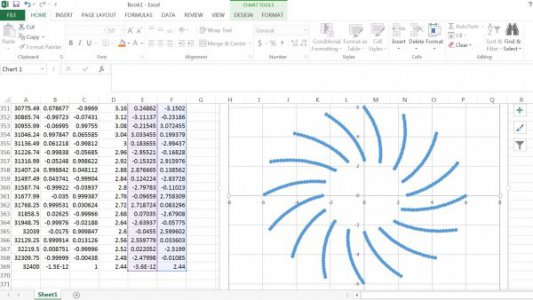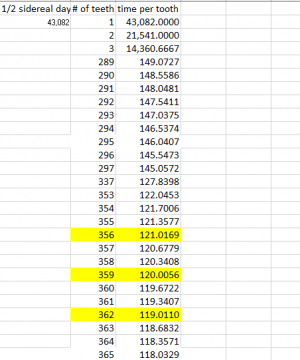Sorry, I got called away for a
minor emergency. To continue:
I got my hands on a set of fraction plates a few years ago (misidentified, not stolen) with prime numbers up to 97. They are well over a foot(16") in diameter and my indexer is 4 inch diameter. I leave the results to your imagination. It ain't pretty
.... For any large number like you are describing, keeping track of minutes and seconds would be a real PITA. One missed second on tooth 345 and the job is botched and ready to start over.
Once you figure out the desired ratio of two gears, it would be like a clock mechanism. Multiple stages if applicable. A damn fine tooth if multiple stages won't work. That's where the hand derived plate comes in. Figure 359 ticks, like 1cm on a
yardmeter stick..... Naw, thats only a hundred. Make it 1 mm per. So every 10 mm, mark a reference, and then divide by ten to get an accurate 1 mm.(0.03937) Now from that calculate the diameter of a circle. With a circumference of 359 mm, the diameter would be around 5 inches. Make a sunburst pattern, scribing out to a usable size and draw your circle. When you're ready to cut, each gear is marked. After making a half dozen teeth, set up an indexer for the rest. Simple but exhausting. But it can be done. Just have a
big coffee pot. I would start with a hacksaw and a fresh pack of smokes, and a clear ashtray. For a larger gear, a cutter.
Once the first one, a master, is made, the rest are a piece of cake. The first concept to grab here is that an indexer or rotary table is not vital. As in, how was the first ever gear ever made? What
is vital is to think through the problem and determine the simplest way to accomplish the end result. I play with model trains. They use a worm and pinion gear for the drive mechanism. I understood a worm and pinion when I was a kid. Simply a small indexer when you come dowm to it. Not really relevant, I had to plug the models. An indexer is fine for a production shop. But for
one off gears with an odd number of teeth, as much time is spent figuring out how to make tham as the making.
KISS
Bill Hudson




